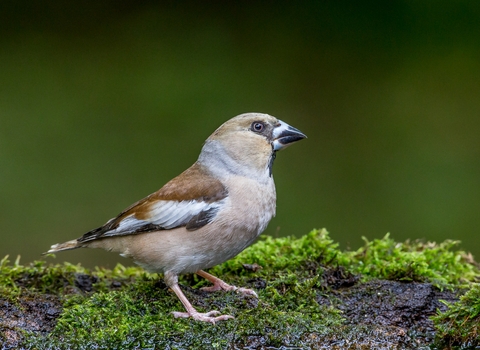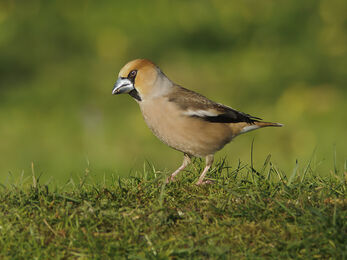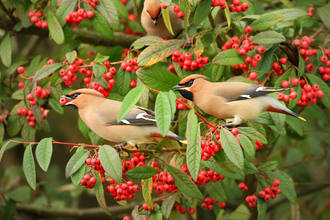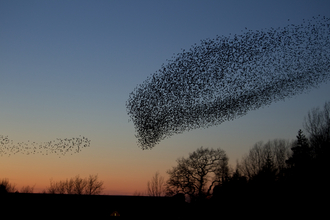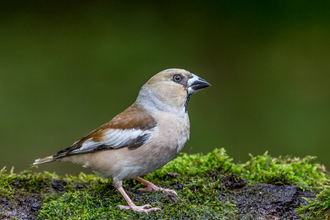Where to see a hawfinch
The hawfinch is our largest finch, but despite its size it's also the hardest to find. It's a red-listed species in the UK, with a population that may number fewer than a thousand breeding pairs, mostly restricted to a few remaining strongholds. To make things trickier, even in hawfinch hotspots they are extremely elusive, spending a lot of their time hidden high in the forest canopy. A singing bird isn’t even a giveaway, since their surprisingly quiet song easily goes unnoticed.
But in winter, things get slightly easier. Numbers increase as continental migrants arrive, and bare branches offer far less camouflage than a leaf-filled canopy. They also form small flocks at this time of year. With more birds present and fewer places for them to hide, the chances of spotting one shoot up.
The UK’s largest finch is a bird of impressive proportions, 18cm tall with an enormous conical bill, a thick neck and a head to match
Find a hawfinch
Most strongholds are now in southern England, with populations in the north and south of Wales and southern Scotland. The Forest of Dean, the New Forest, the East Anglian Breckland and the Conwy Valley in North Wales are all well-known spots for searching for a hawfinch. Here are a few Wildlife Trust nature reserves where hawfinch can be found:
Cumbria Wildlife Trust,
Brown Robin - Look out for hawfinches using their powerful beaks to open cherry and hornbeam seeds in this limestone woodland reserve.
Shropshire Wildlife Trust
Whitcliffe Common - The woods of this old common include lots of hornbeam trees, a favourite of hawfinches.
Yorkshire Wildlife Trust
Staveley nature reserve - This superb wetland site lying close to the River Tutt holds year round interest for visitors with regular sightings of otters and several orchid species among the highlights.
How to do it
Late winter is often best time to see them. Find a clearing or a woodland edge (to give a better view of the treetops) and be prepared to spend a lot of time looking up: though they do sometimes venture down to the floor to eat and drink, they're most often found at the very top of a tree.
Here’s a tip – learn their call, a staccato robin-like ‘tick’, which is often a good way to locate them as they feed high up in the trees or fly overhead.
If you can't get to these places
If you can’t get to one of these sites, it’s always worth keeping an eye (and more often ear!) open for migrant hawfinches arriving from mid-autumn when they can turn up in unexpected places. They're particularly keen on hornbeams and yew trees.
In autumn 2017 there was a record influx of hawfinches to the UK, with huge flocks in some areas and thousands of records from all over the country, including many from parks and gardens.
More wildlife experiences
From spectacular starling murmurations to the wonders of bird migration, we can help you get closer to wildlife across the UK.

